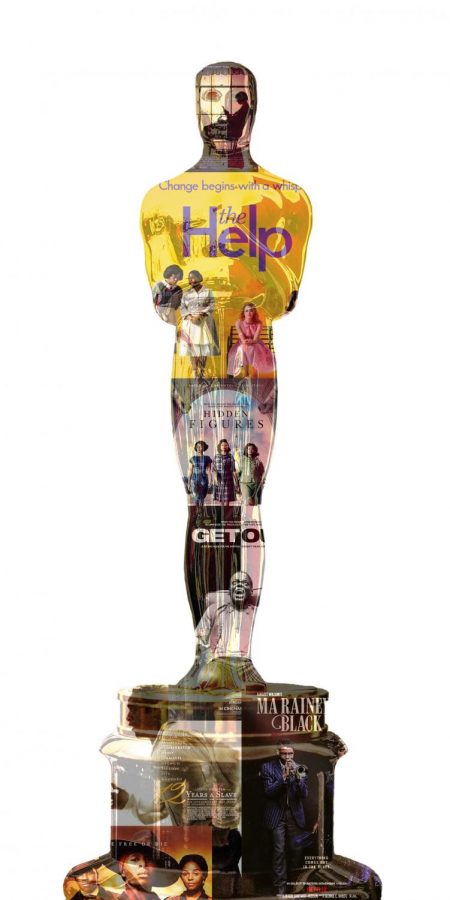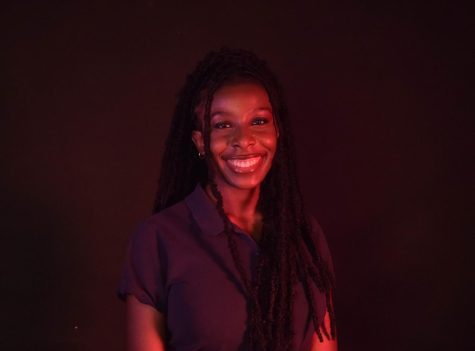Moonlight.
Twelve Years a Slave.
Green Book.
Out of the 93 films awarded the title of “Best Motion Picture” at the Academy Awards, only three star both Black actors and Black stories, and they all depict some of the most difficult parts of African American history, both past and present.
When Black experiences are intrinsically connected to pain, hardship and oppression, the stories of Black triumph are lost. Movies solidify both the traits and themes we value but also give voice to the problems we perceive. The reality for African Americans is that the only stories of Blackness that are praised and valued are ones of racialized struggle; Black success and Black joy are shunned in favor of Black pain.
In 2018, “Green Book” spotlighted that lack of dimension. Directed by Peter Farrelly, the movie would go on to win the Academy Award for Best Picture the following year. The film’s plot centers around the characters Tony Vallelonga and Don Shirley, a Black classical and jazz performer and composer as they travel across the midwestern and southern United States
The title references a guide used by African Americans that detailed safe places in the Jim Crow infused South from the 1930s to the 1960s. But throughout the entirety of the film, no Black person mentions the significance of the Green Book or even holds it.
By never having a Black person hold or explain the very title of the film, “Green Book” resulted in a message that never gave credence to the resilience of Black Americans in the face of oppression but highlighted the oppression itself.
“Green Book”’s controversy unfolded as questions about whether or not Shirley and Vallelonga actually wanted a film based on their lives. Not only that, but as the movie was released it became increasingly more obvious that “Green Book” fell neatly into the “white savior” trope.
The “white savior” trope in and of itself facilitates the neglect of Black joy and is integral to the conversation. It spoon-feeds racism in a way that allows white audiences to align with a story’s chosen savior. All the while, Black audiences are traumatized by stories that only seem to benefit by weaponizing Black pain.
White savior films represent what story-telling has done to the Black experience, trivializing it to a plot device. It cloaks itself under the guise of freeing Black characters from the role of villain by casting them in the equally damaging position of victim.
However, Black people constantly rebel against being victimized with moments of civil rights triumph and are constantly met with media that reclaims the events while removing their blackness from the equation.
In the wake of the Black Lives Matter protests, an image emerged of Leshia Evans, an African American nurse from New York, walking towards police officers armed in riot gear. The contrast of Evans’s peaceful procession, with her arms outstretched to be handcuffed, in comparison to the rows of heavily-armed cops spoke volumes to the environment surrounding the protests.
Soon after, Pepsi would go on to release an ad mirroring the same scene but replacing Leshia Evans with Kendall Jenner and a can of Pepsi to offer to the armed officers. The backlash in the face of the ad took social media by storm. Black Lives Matter went on to become one of the largest movements in United States history with Civics Analytics reporting 15 million to 26 million people participating in demonstrations. The ad spit in the face of the millions who supported it.
“How dare you take our struggle, which is so personal, and so painful, and try to use that moment to sell Pepsi,” Tracy Kizer, professor of marketing at Rollins College said.
In the midst of it all, the vocalization of injustice was viewed as a source of monetary gain.
“The outrage was absolutely necessary,” Kizer said. “Outrage is the only way to shift the corporate conversation because the people who make the decision don’t look like you and I.”
But there are glimmers of hope for the representation of Black joy. The remarkable success of the Marvel film “Black Panther” indicated the eagerness of Black audiences to support a film that centered Black characters without centering racial struggle. The movie made 1.3 billion dollars and, according to CNBC, more than all of the other Best Picture Oscar nominees combined, including “Green Book.”
“Black Panther” did not fully divorce itself from the realities of the entire Black experience, but the story itself didn’t hinge on the hardship inflicted upon them by white people.
In the end, the film fit squarely within the superhero genre. For once, Black audiences were able to watch themselves quite literally become both the heroes and villains of a story that celebrated them as complete human beings not entirely condemned to a singular dimension of pain
The prioritization of stories that center on a race-based struggle of the Black experience denies the story of unadulterated joy white audiences receive. As Jamil Smith, writer for the New York Times explained, “Every day, the culture reflects not only you [white people] but nearly infinite versions of you … the world shows you that your possibilities are boundless.”
As possibilities begin to unfold for Black Americans, diversity needs to be prioritized. Not just diversity in whose story but in what type of story we decide to tell.











